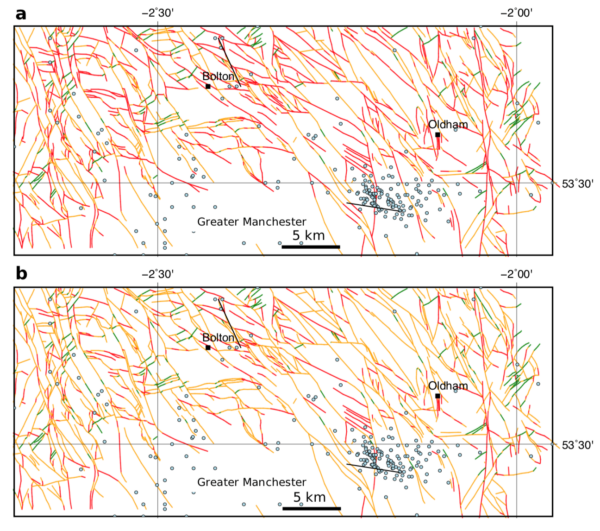“Quantifying the probability of induced seismicity and fluid flow for geothermal development”
20 de enero de 2023, 12:00 hrs. Actividad presencial.
Extendemos la invitación al primer seminario DIEG del año, donde contaremos con la participación del académico David Healy de la Universidad de Aberdeen, Escocia, Reino Unido, donde sostiene una posición en Mecánica de Rocas y Geomecánica. También trabajó en Universidad de Curtin, Perth, Australia; Universidad de Durham y Universidad de Liverpool. Antes de realizar sus estudios de doctorado, trabajó como programador, analista y líder de equipo en TI en empresas como BP, Chevron, Marks & Spencer y American Express. Hoy se encuentra dedicado a la academia, enseñando tópicos de geología estructural, geofísica, geomecánica y metamorfismo. Sus líneas de investigación incluyen flujo de fluidos subterráneos en roca fracturada, la anisotropía de elasticidad y poroelasticidad, mecanismos de falla frágil y flujo de calor de la corteza.
Abstract
The operations needed to decarbonize our energy systems increasingly involve faulted rocks in the subsurface. To manage the technical challenges presented by these rocks and the justifiable public concern over induced seismicity, we need to assess the risks. Widely used measures for fault stability, including slip and dilation tendency and fracture susceptibility, can be combined with Response Surface Methodology from engineering and Monte Carlo simulations to produce statistically robust ensembles for the analysis of probability. In this talk, I’ll describe this approach using custom-built open-source Python code (pfs – probability of fault slip). The technique is illustrated using examples and case studies drawn from sites for geothermal energy in the UK and discussed in the light of induced seismicity focal mechanisms. The analysis of geomechanical probability highlights key gaps in our knowledge of the stress field, fluid pressures, and rock properties. Scope exists to develop, integrate, and exploit citizen science projects to generate more, and better, data and simultaneously include the public in the necessary discussions about hazard and risk.
*Presentación en inglés

Inscripciones aquí:
